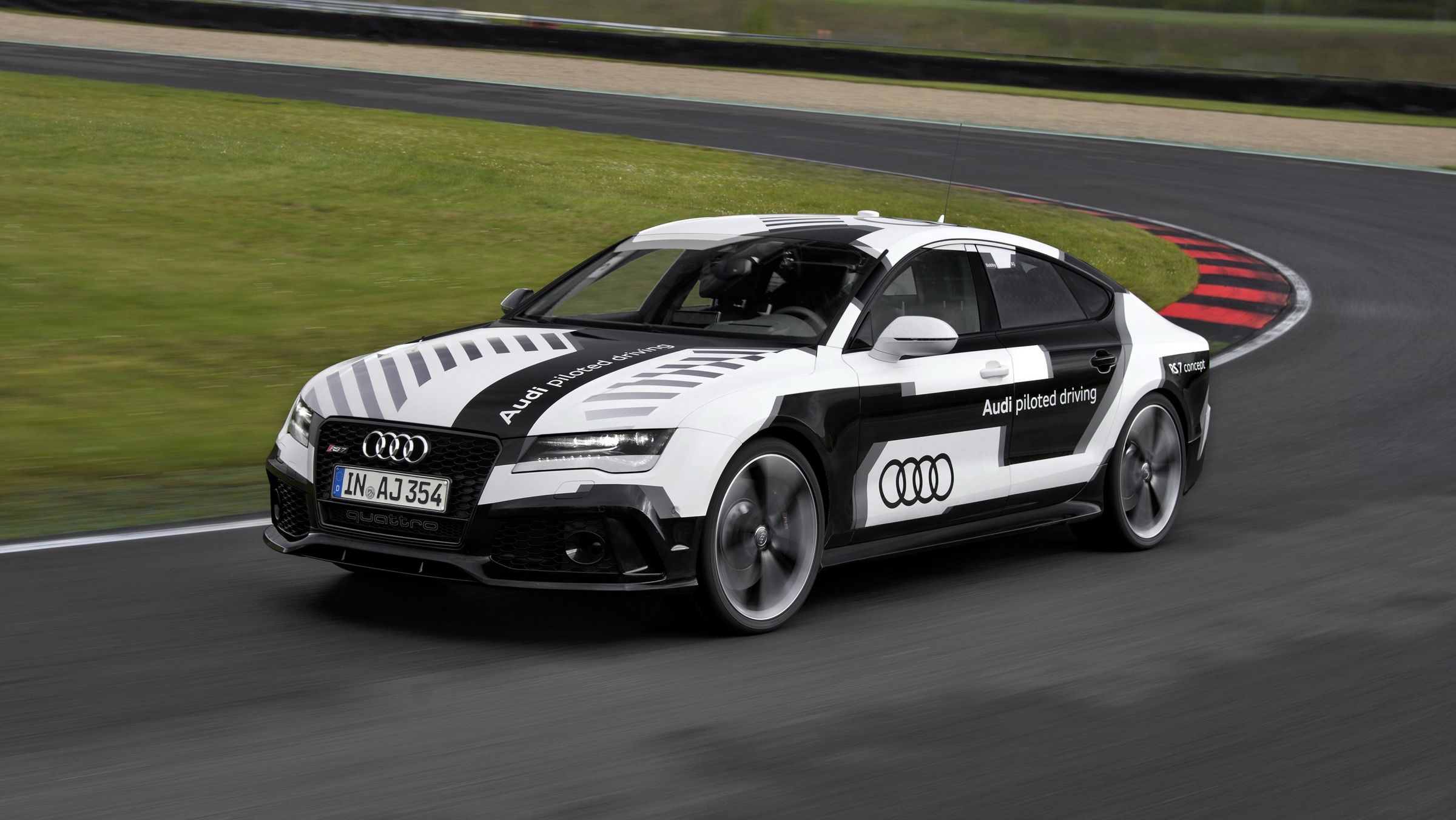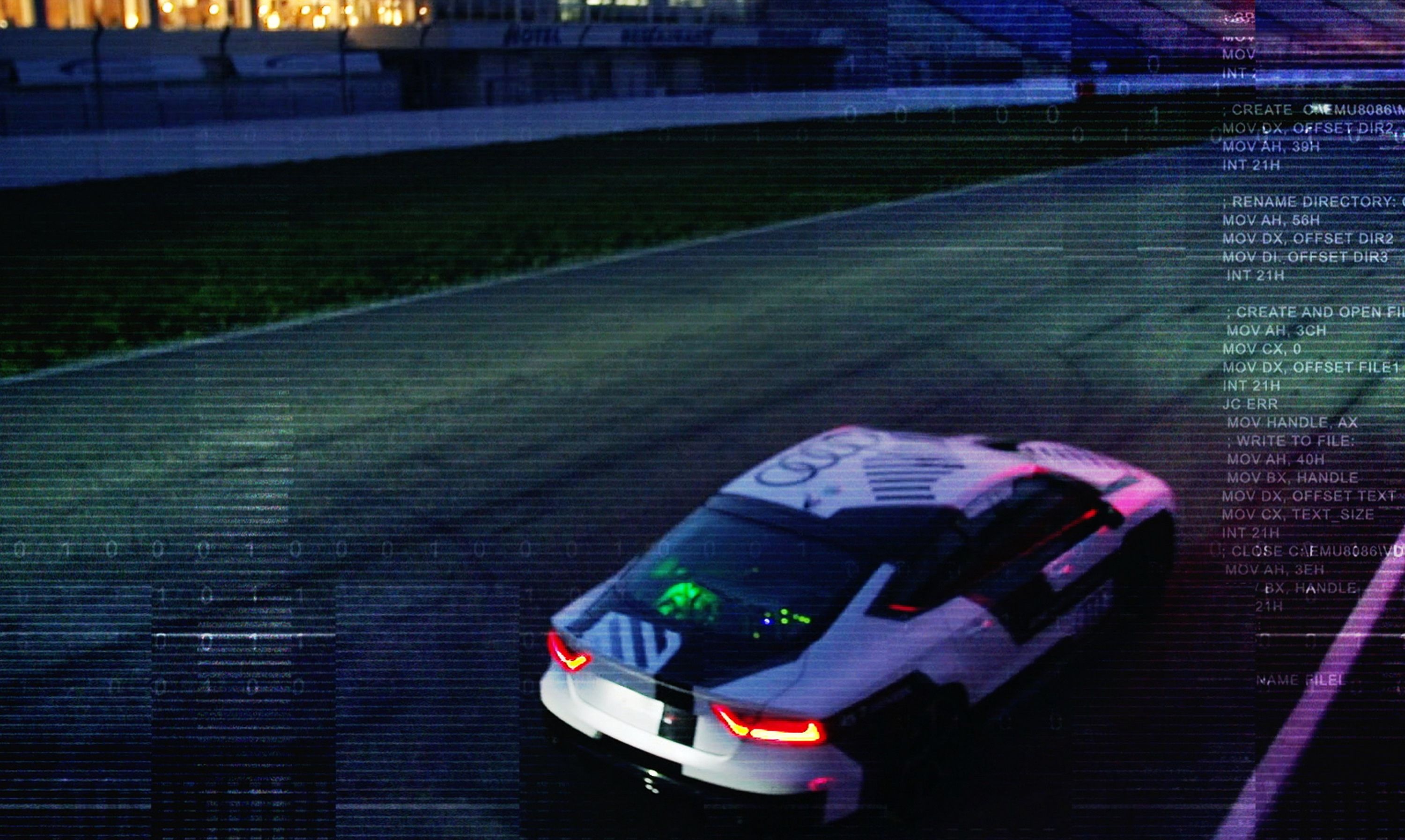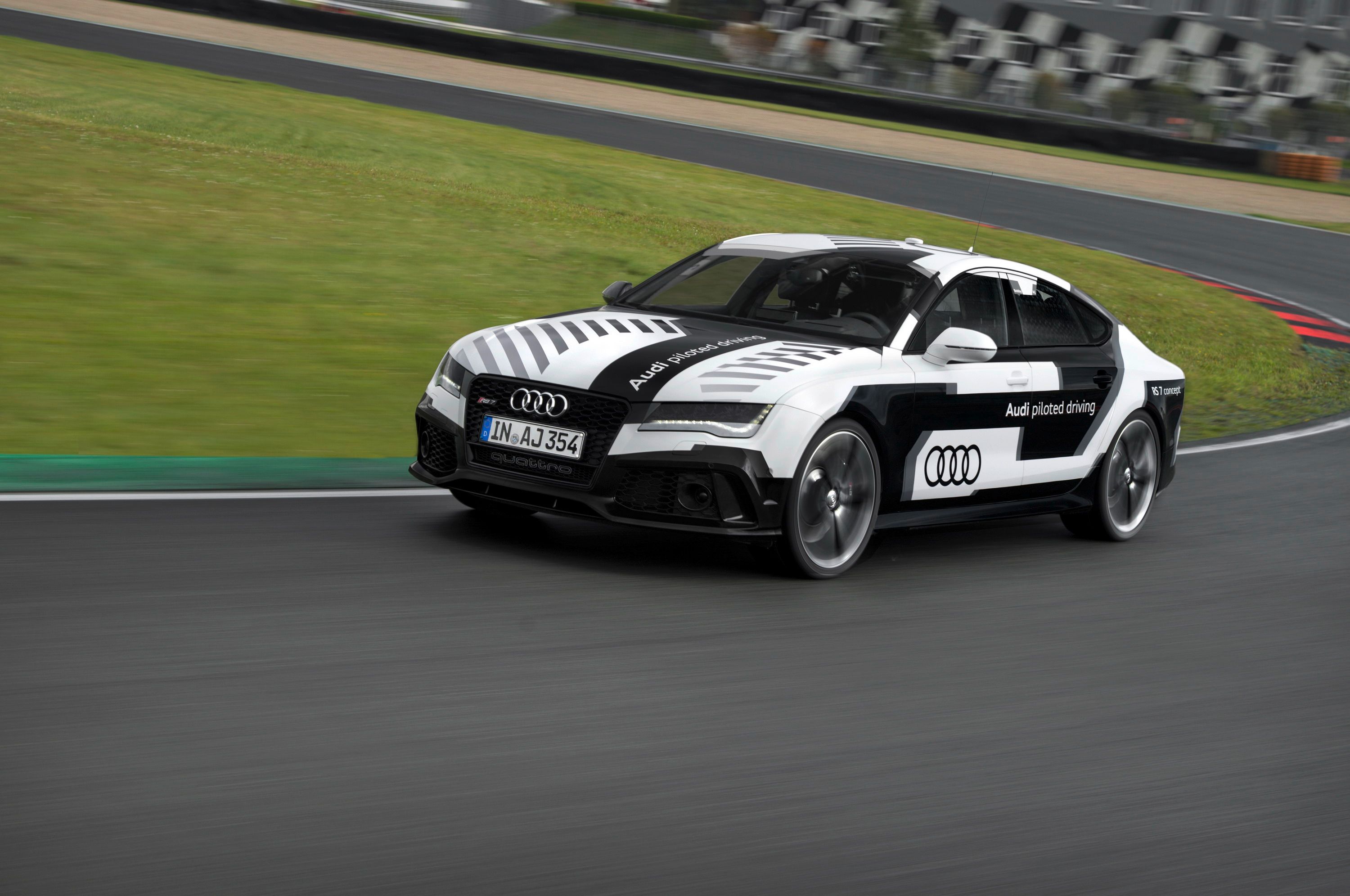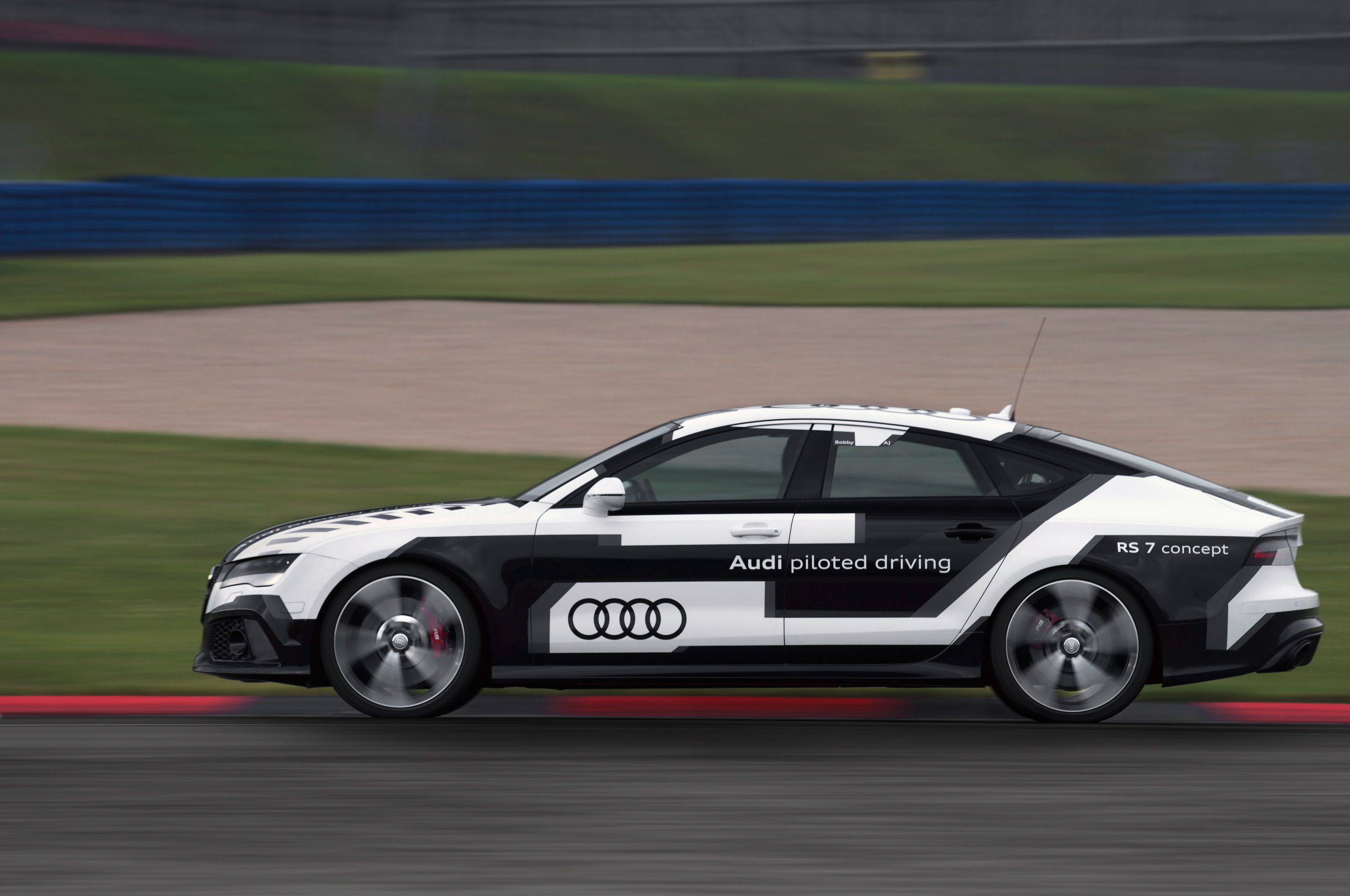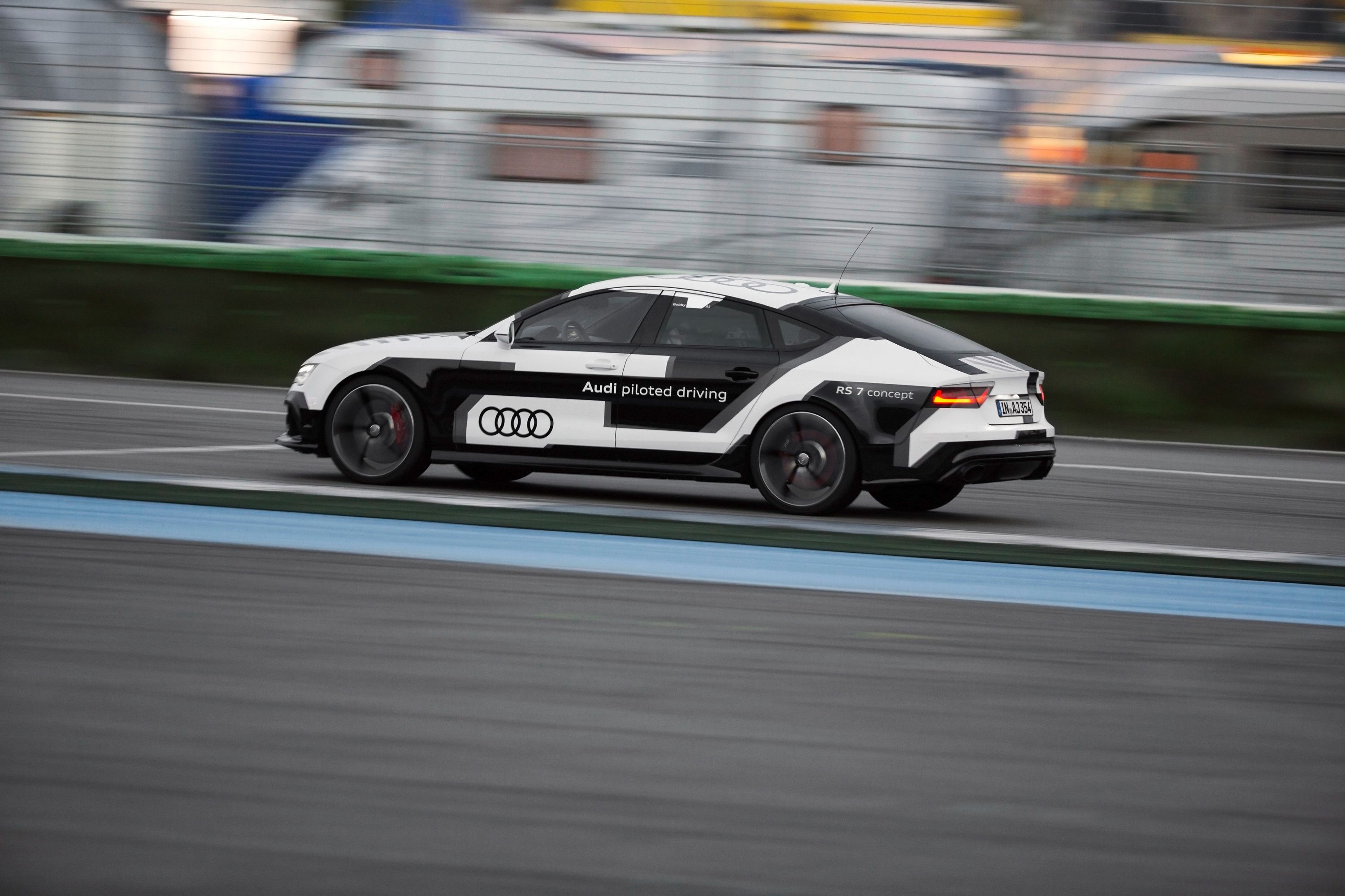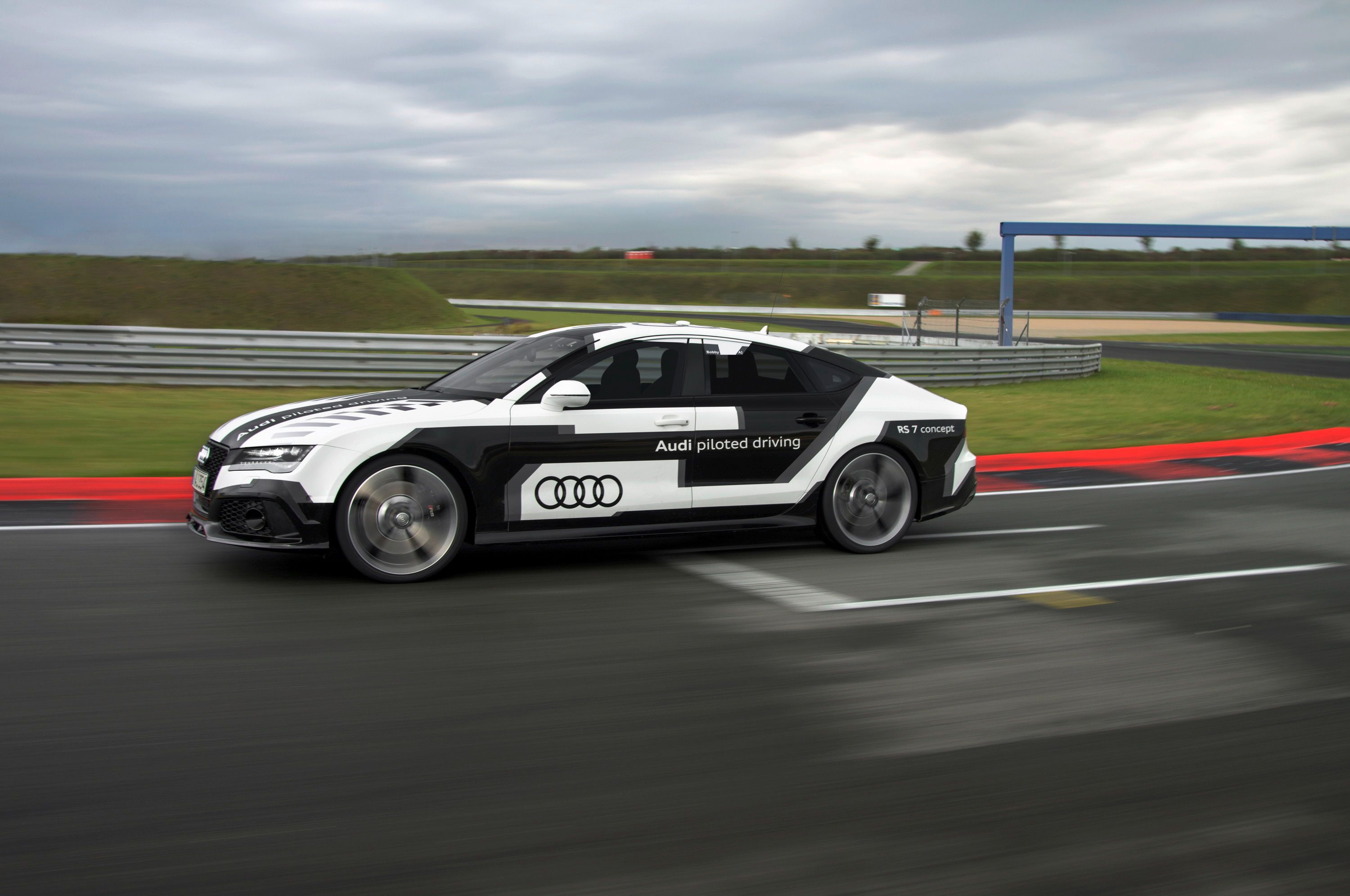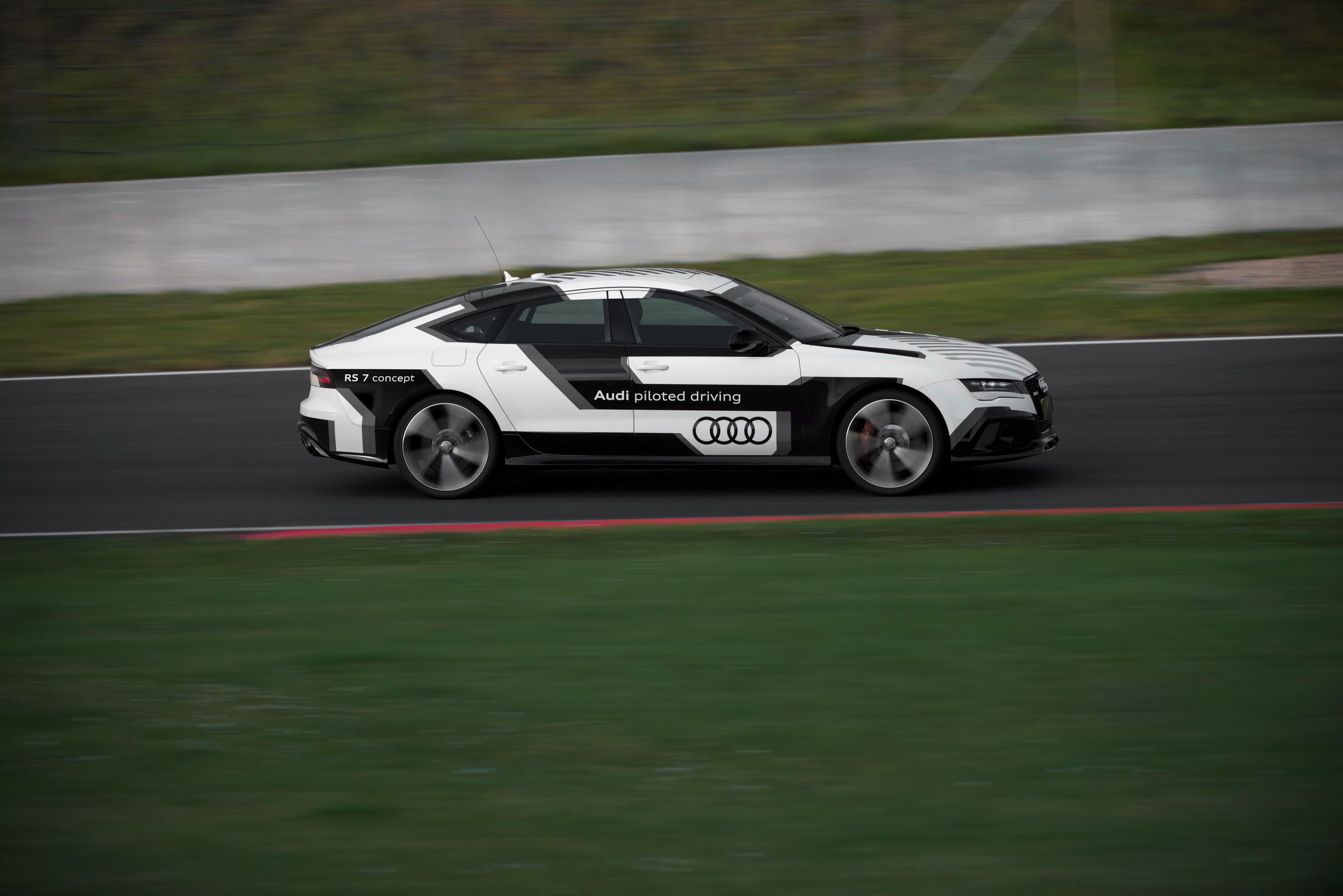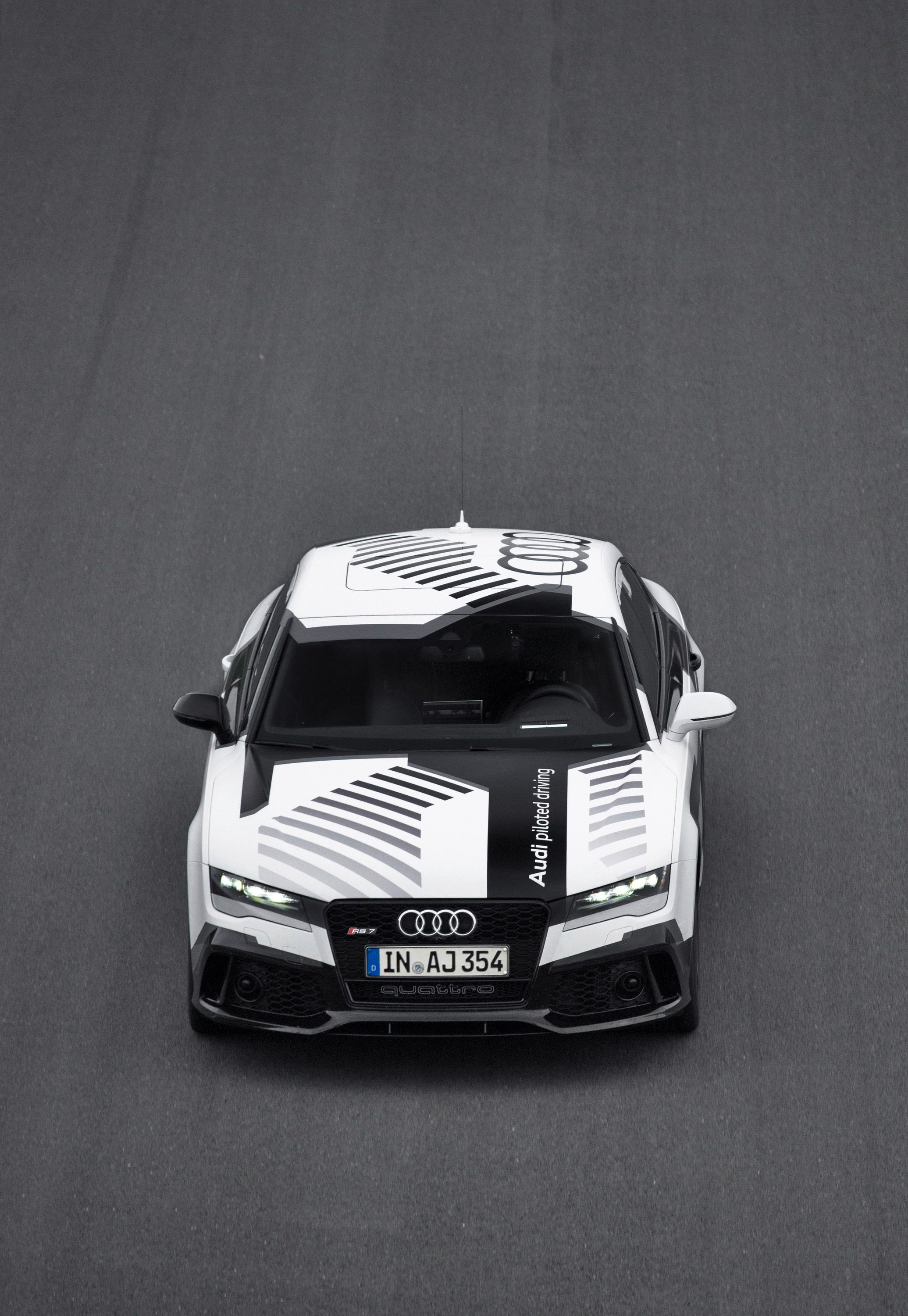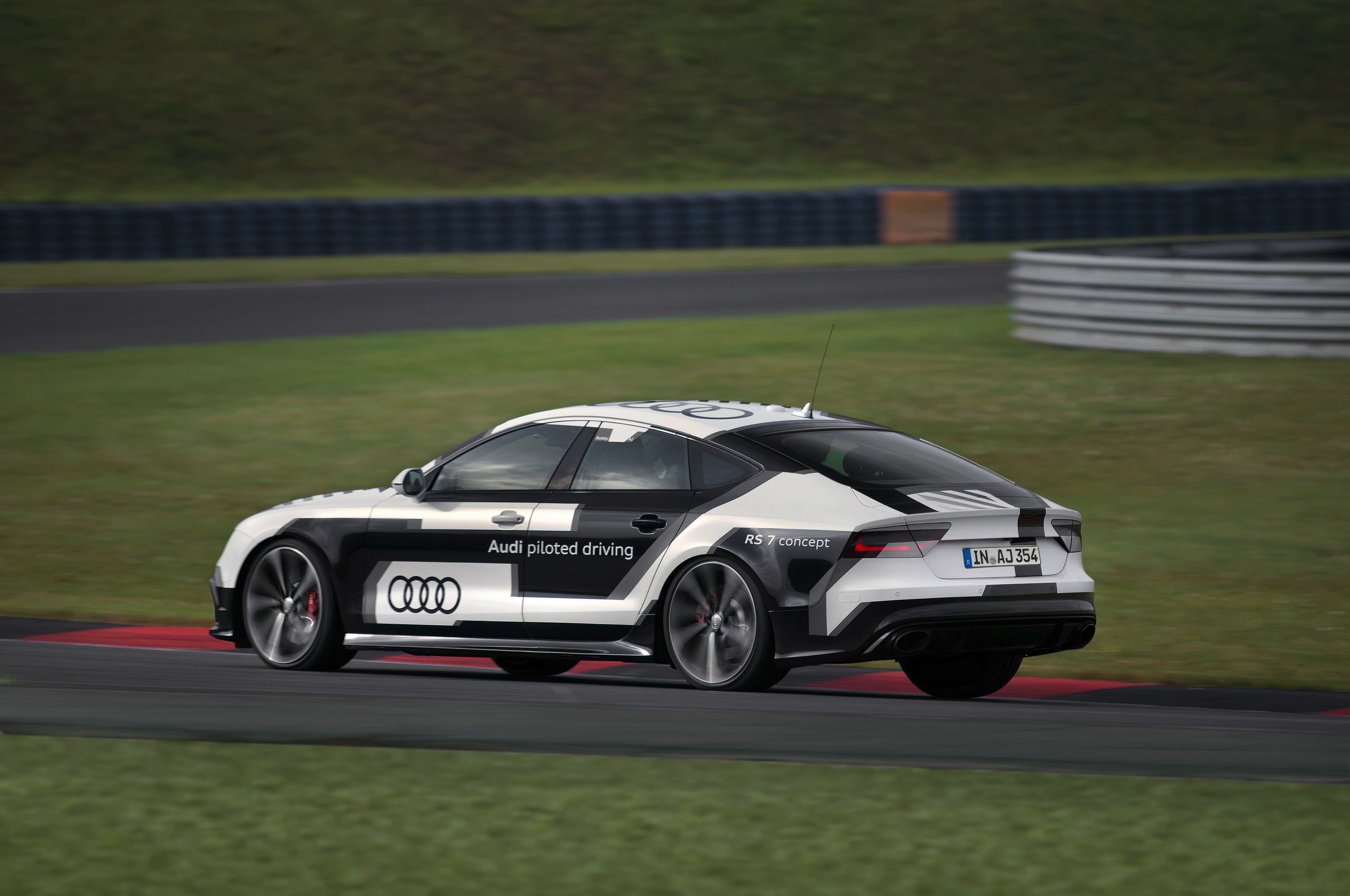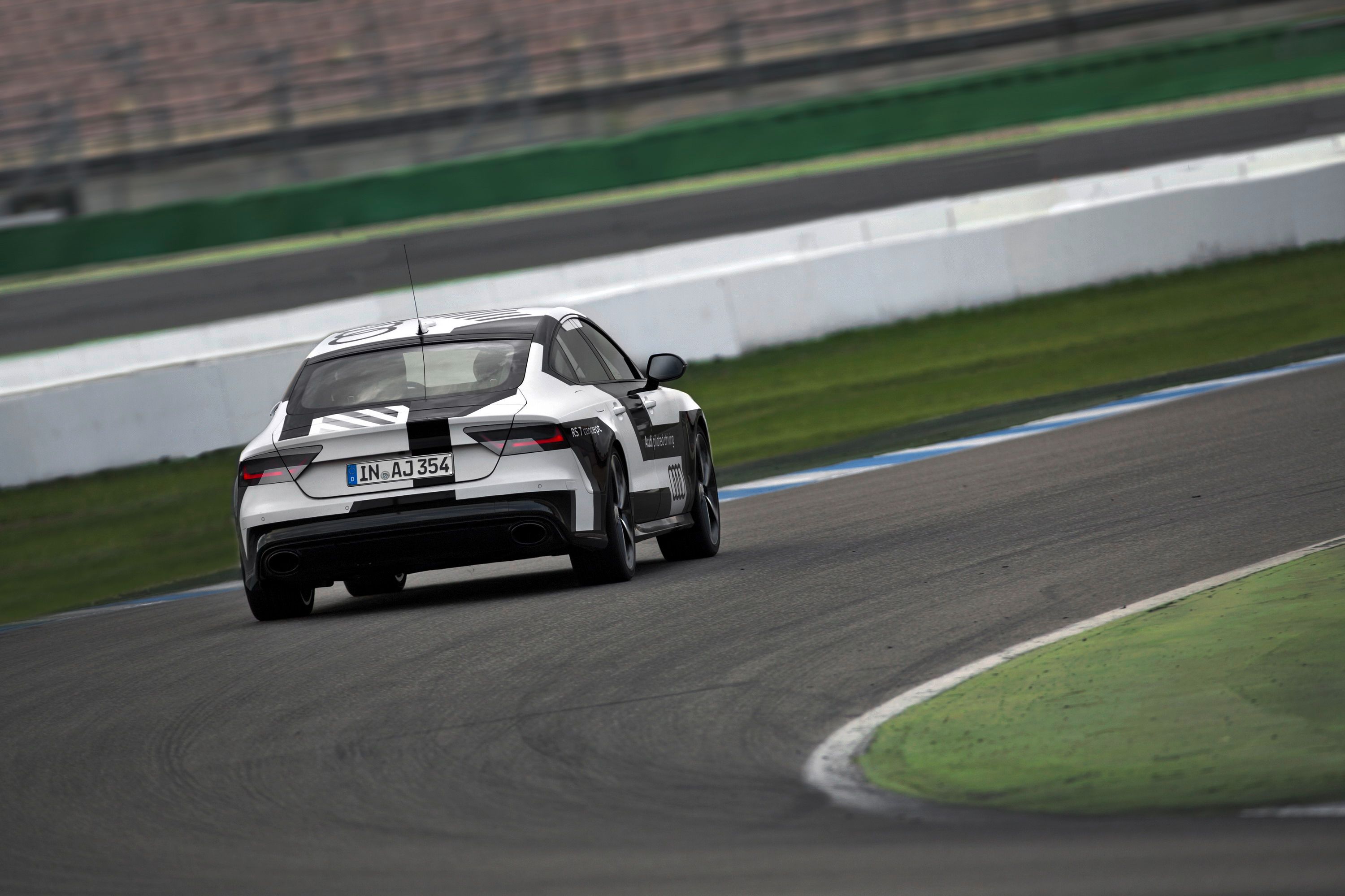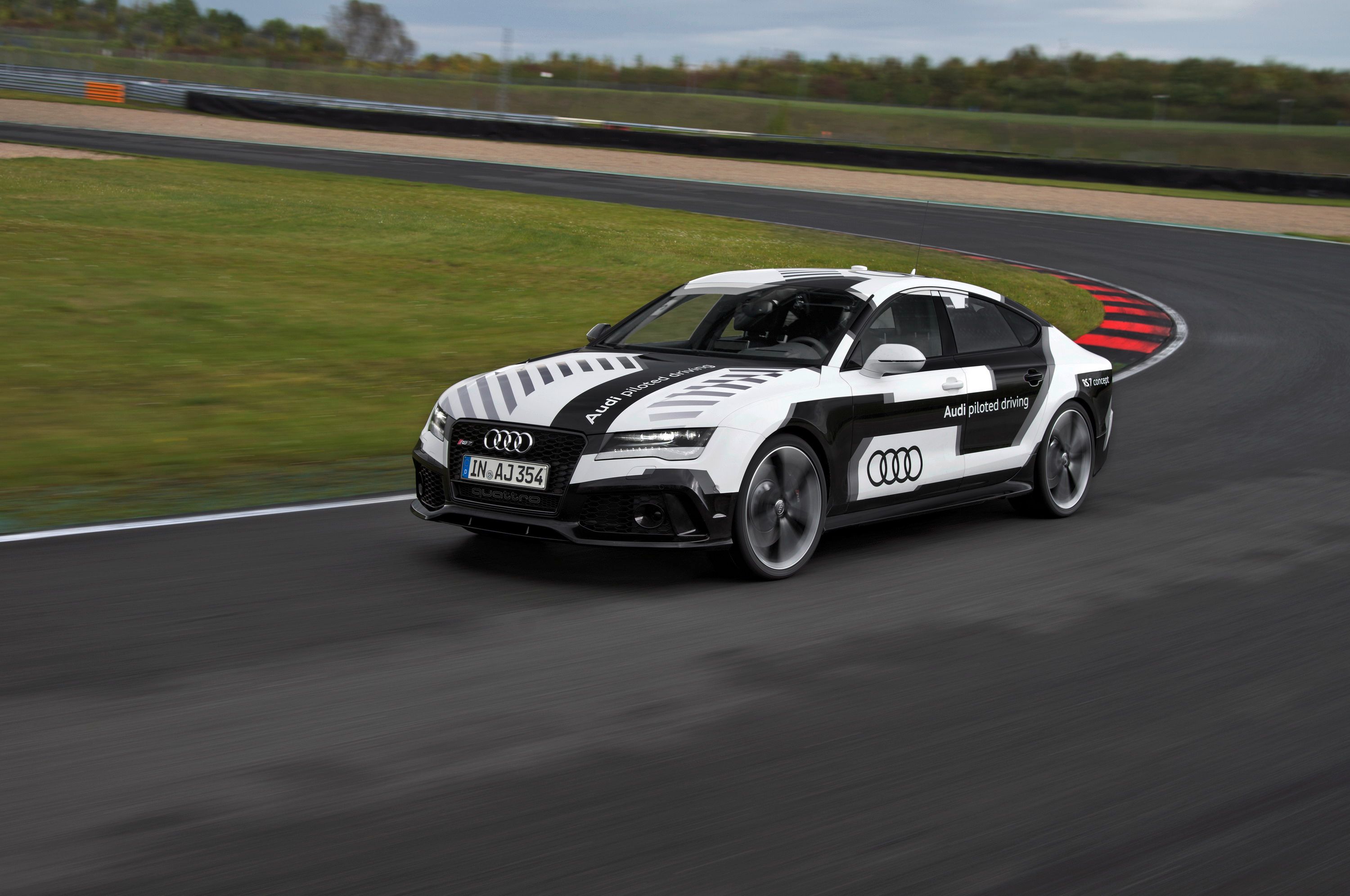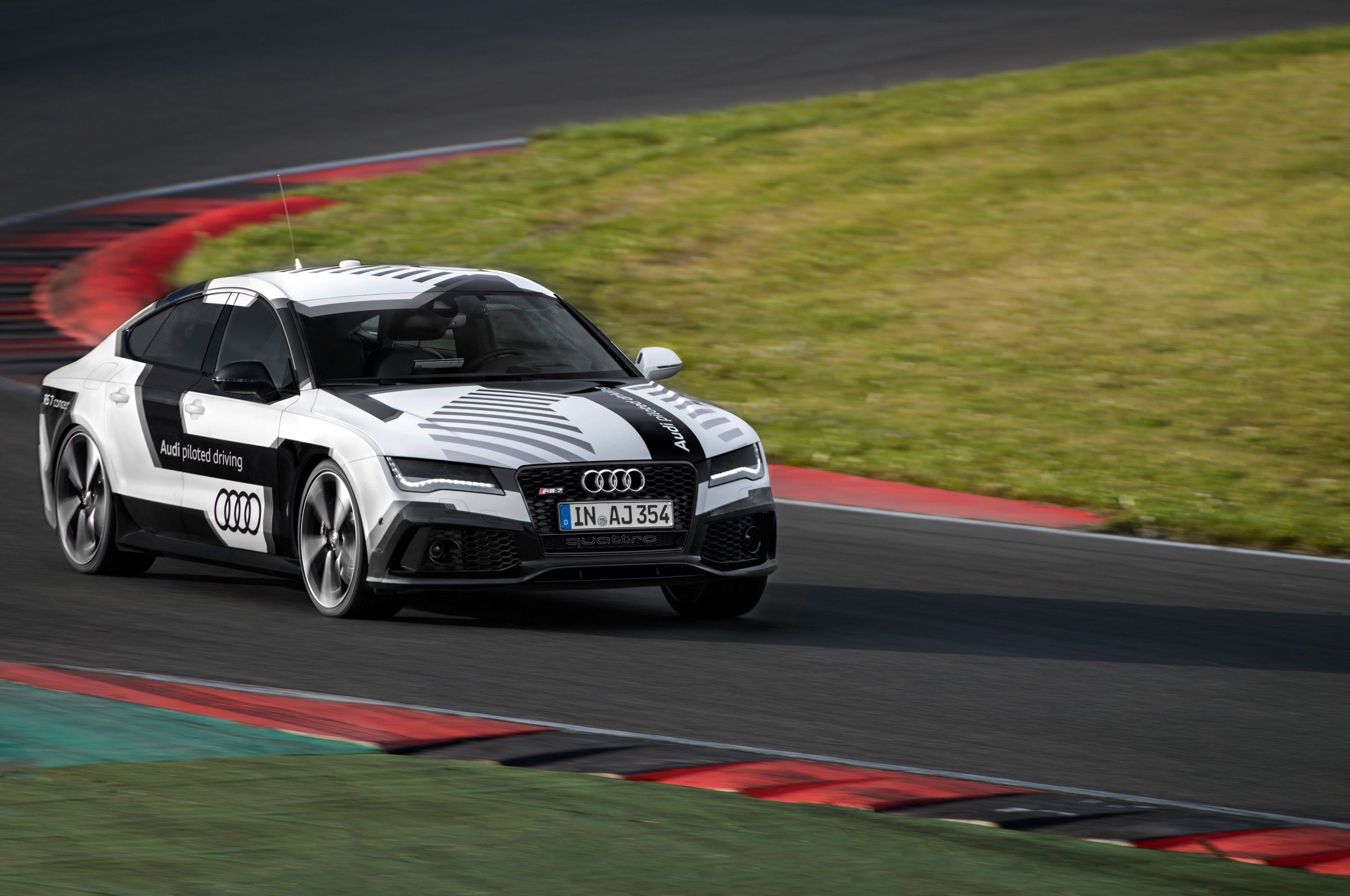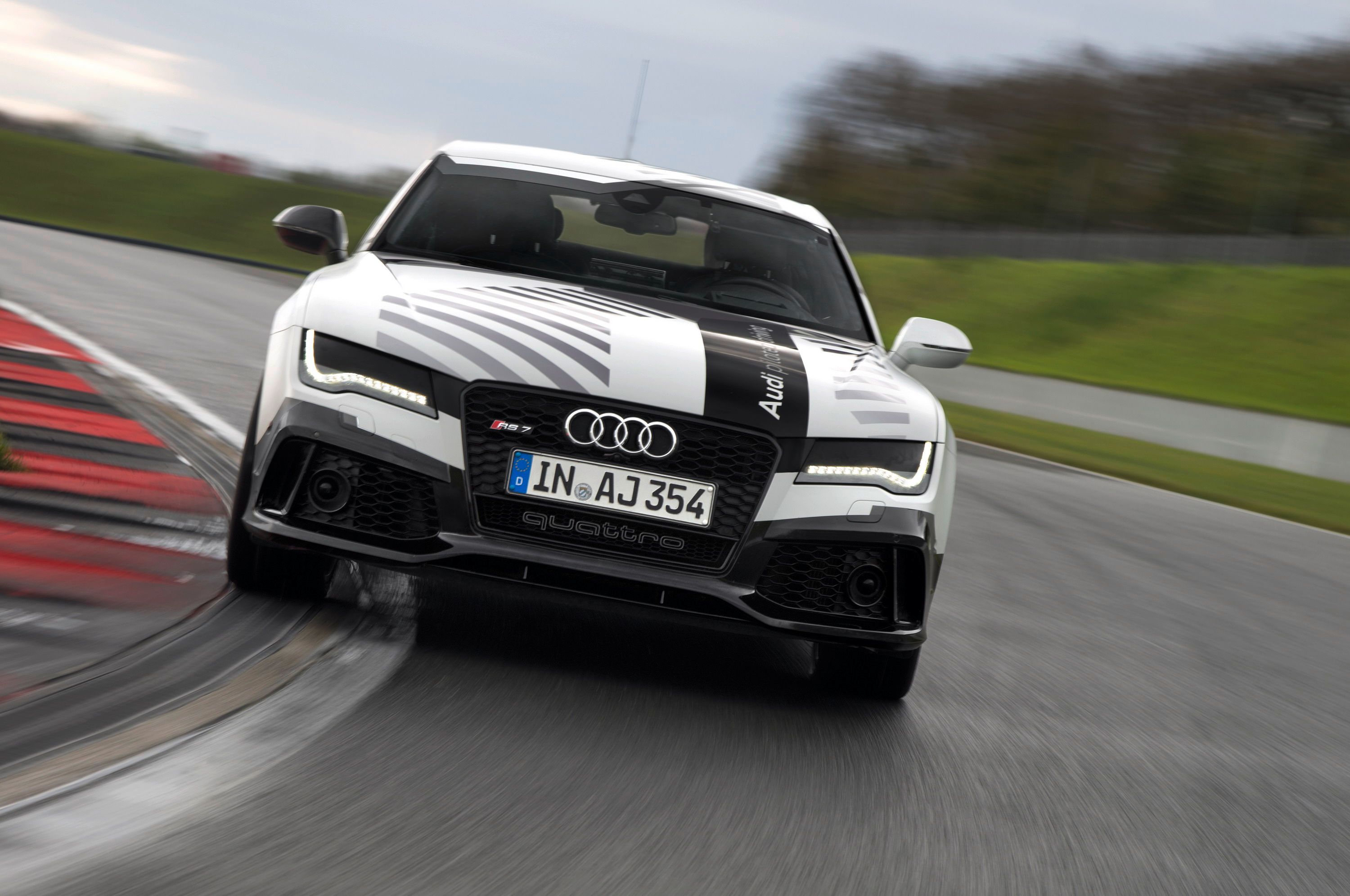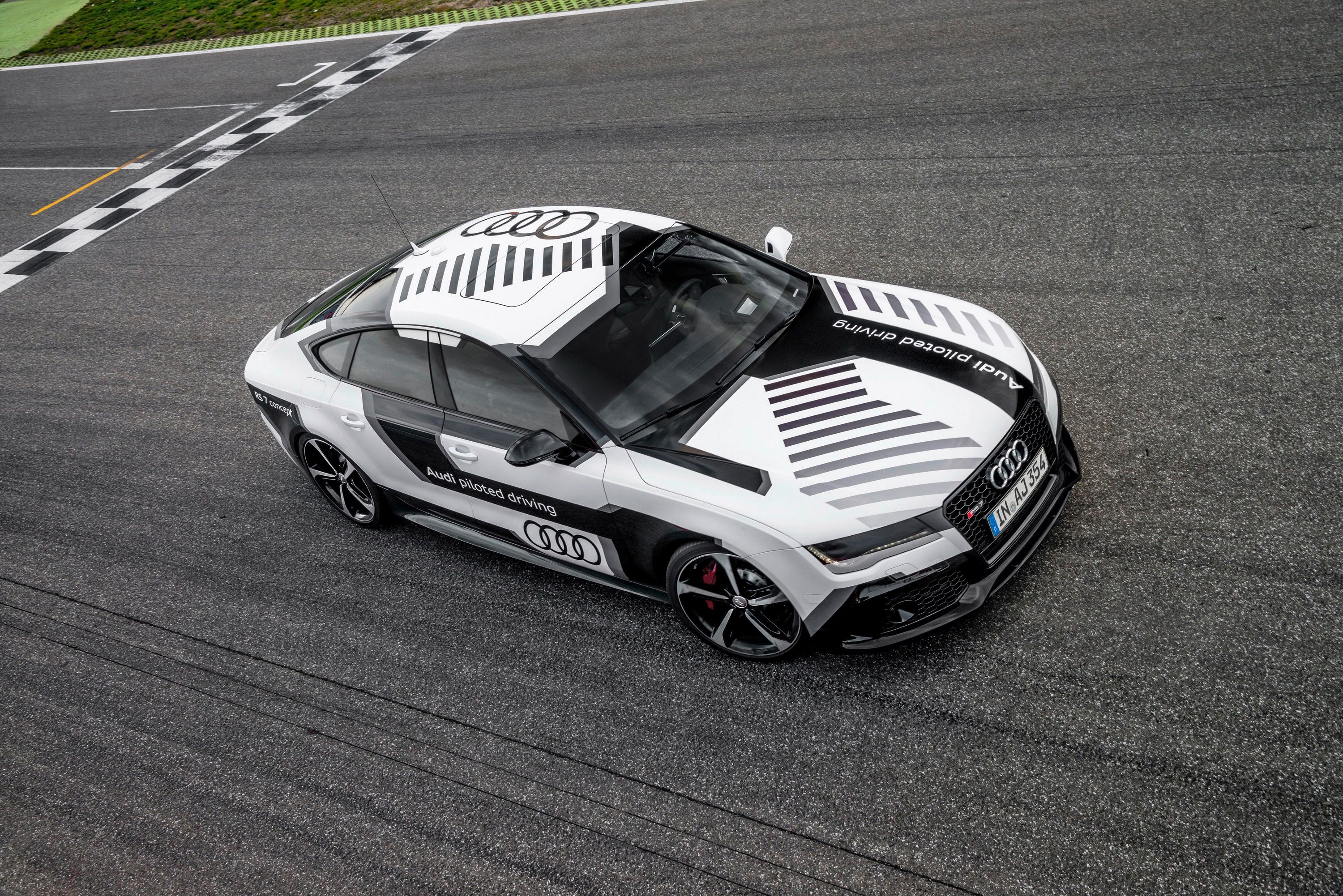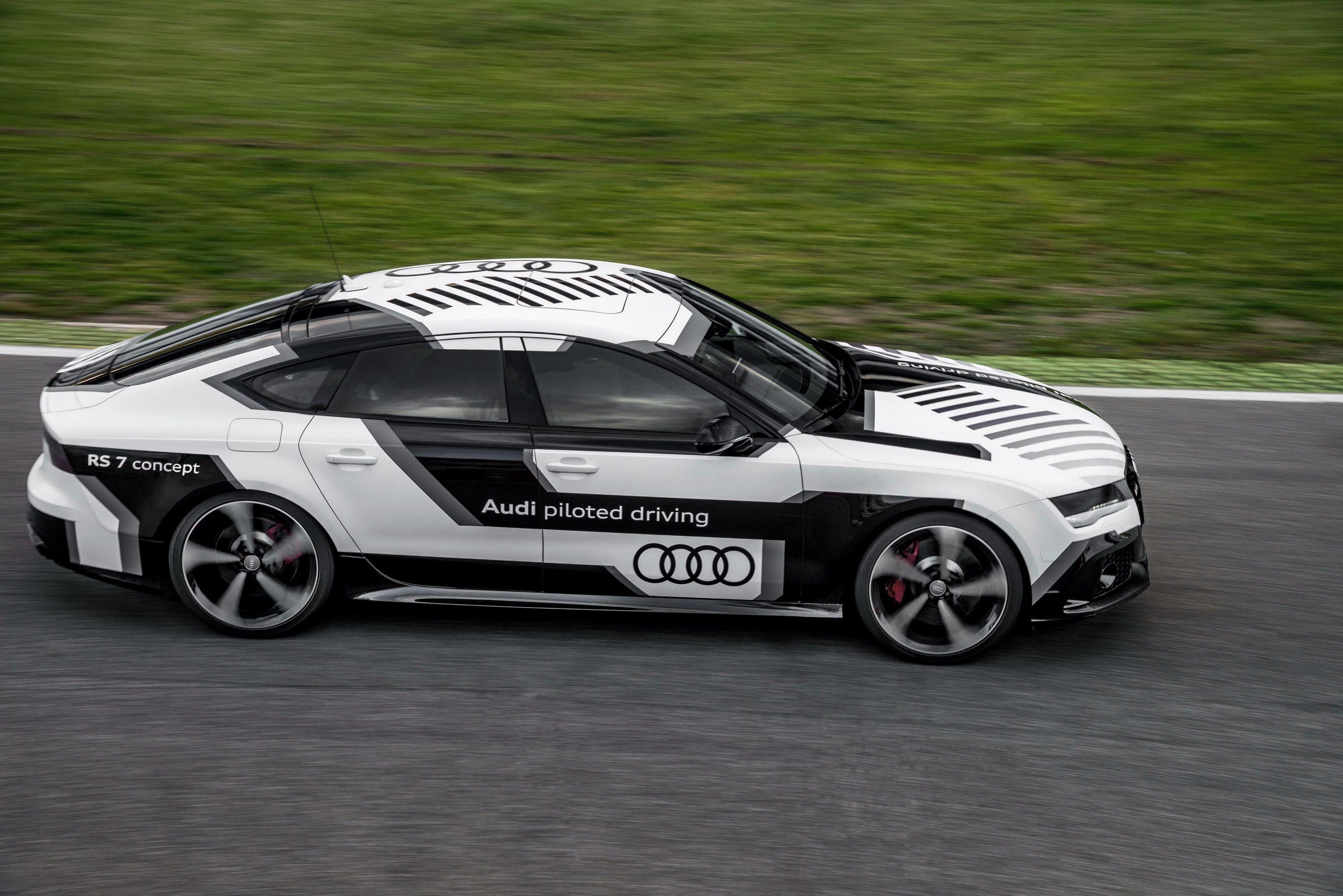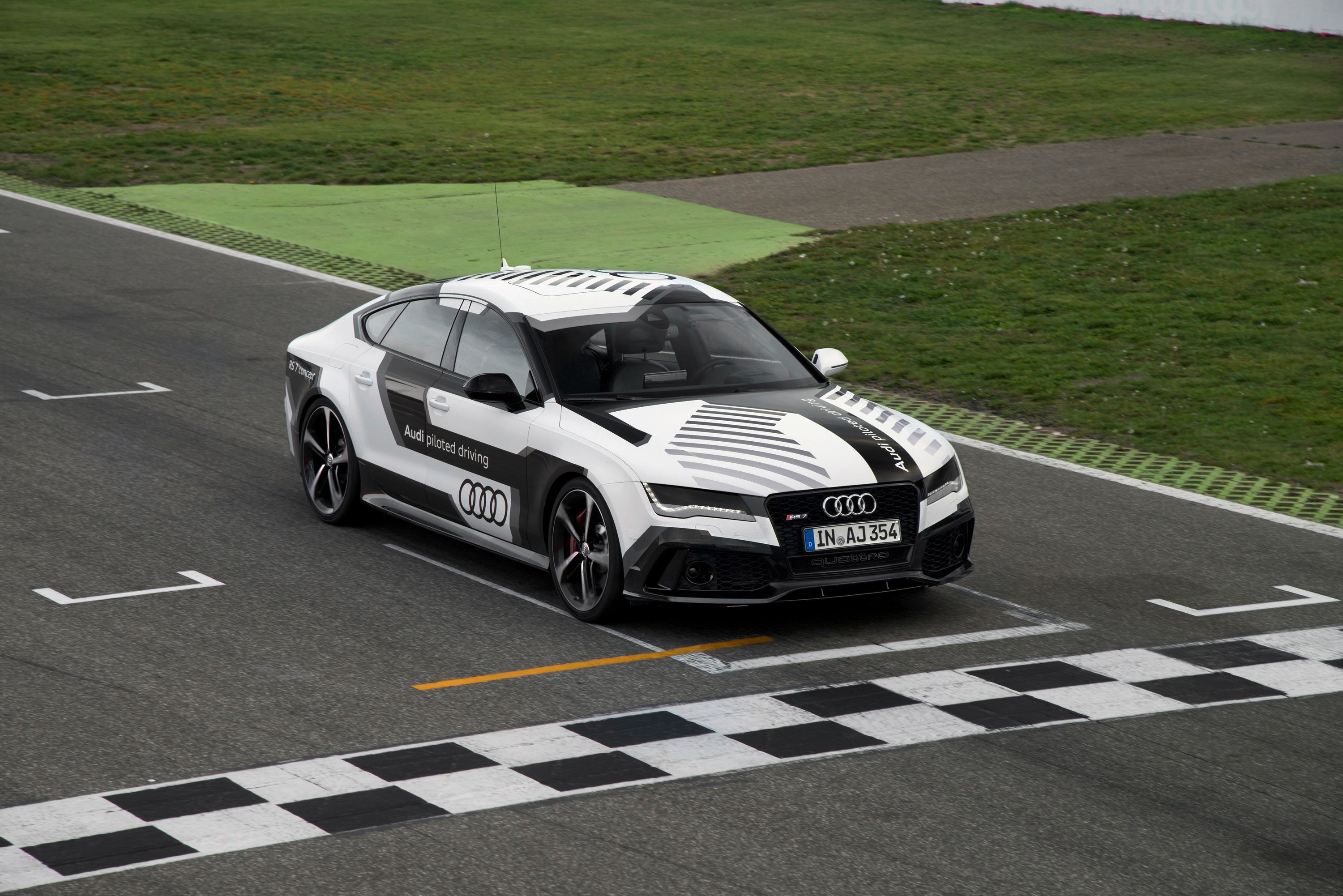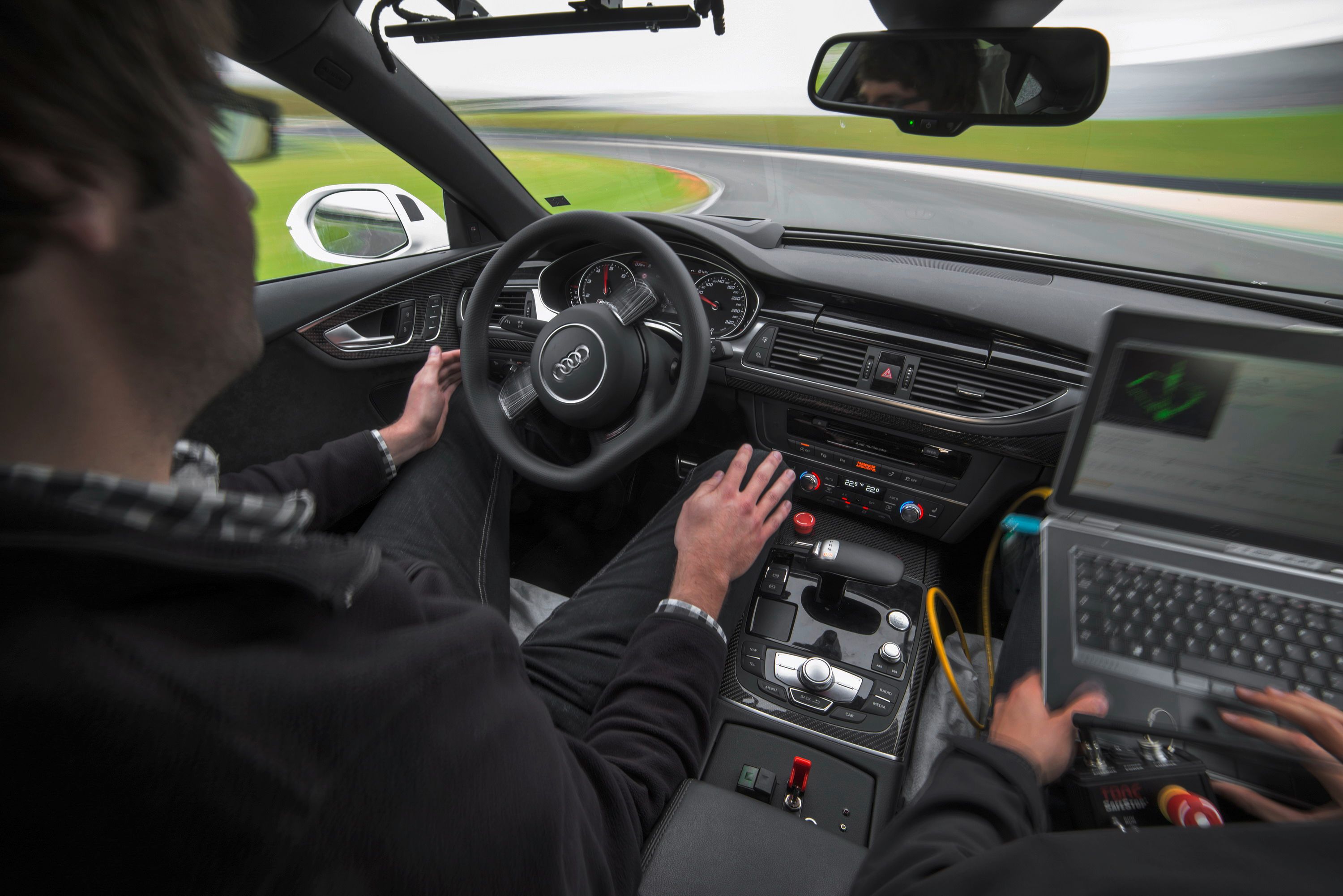The race to create the first production self-driving car began in the early 2010s with many major automakers, including Ford->ke31, Audi->ke14, Nissan->ke62 and Toyota->ke88, testing driverless systems. A major breakthrough was achieved in 2010, when Audi sent a driverless TT to the top of the Pikes Peak->ke1001 race course in 27 minutes with a top speed of 45 mph. While the numbers are far from overwhelming, the project was successful and proved autonomous cars can become a reality in the near future. Nearly four years later, Audi is back to showcase yet another self-driving car, the RS7 Piloted Driving Concept.
Based on the luxurious and fast RS7 sedan, this self-driving car is packed with the company's latest technology in terms of orientation devices and on-board networking systems, and is set to debut at racing speed on Germany's Hockenheimring track. Audi predicts top speeds of up to 149 mph and forces of up to 1.1g under acceleration, two enticing figures for a car that runs without a driver on board.
Updated 10/14/2014: Audi unveiled the official details on its latest project: the Audi RS7 Piloted Driving Concept. Click past the jump for more details.
Click past the jump to read more about the Audi RS7 Piloted Driving Concept.
2015 Audi RS7 Piloted Driving Concept
- Make: Array
- Model: 2015 Audi RS7 Piloted Driving Concept
- Engine/Motor: V8
- Horsepower: 560
- Torque: 516
- [do not use] Vehicle Model: Array
Exterior
Visually, the Piloted Driving Concept is like any other 2014 Audi RS7, meaning the sedan is devoid of the mild refresh introduced for the 2015 model year, and sports the pre-facelift headlamps and taillights. Additionally two minor differences can be spotted. The most noticeable difference is the custom livery that features a monochrome design, the company's logo and "Auto piloted driving" lettering on the doors. A closer look reveals the sedan no longer features chrome inserts, with blacked-out pieces replacing the grille frame and window trims.
Interior
The single photo showing the concept's interior reveals the cabin remained largely unchanged, with only a few additional buttons and switches added to the center console. There may be more extra gear fitted in the cockpit to help Audi engineers monitor the self-driving car, but details are extremely limited as of this writing.
Drivetrain
Motivating the Piloted Driving Concept is the same twin-turbo, 4.0-liter V-8 engine found in the regular RS7. The unit cranks out 560 horsepower and 516 pound-feet of torque, exposing the self-driving sedan to the same outstanding performance figures that come with the production RS7. Specifically, the car will accelerate from naught to 60 mph in only 3.9 seconds before reaching a top speed of 189 mph. The powerful engine mates to an eight-speed automatic transmission and a quattro all-wheel-drive system.
Self-Driving Technology
The on-board networking system controls everything from the power steering, braking and throttle valve to the automatic transmission and all-wheel-drive system in a process that has been tested over thousands of miles on a variety of routes. Audi expects the self-driving RS7 to perform at its physical limits and lap the Hockenheimring at full throttle on straights, full braking before the corners, precise turn-in and perfectly balanced acceleration when exiting the corners.
The car is predicted to lap the German track in two minutes and ten seconds, while reaching a top speed of 149 mph and forces over 1.3g under braking and up to 1.1g when accelerating. Quite impressive for a vehicle that runs without a driver on board.
Prices
The RS7 Piloted Driving Concept will remains just a study, as Audi's main goal with it was to created the sportiest self-driving car yet. If the technology makes it to production, it will likely be used in a different kind of vehicle.
Meanwhile, there is a price to pay if you want to see this RS7 in action at the Hockenheim track. The sedan will lap the course on October 17th and October 19th, prior to the start of the DTM race. Friday tickets cost €10 ($12.77 as of 10/15/2014), while Sunday tickets start from €21 ($26.69) with advanced booking and from €25 ($31.93) on the day.
Competition
Renault Next Two Autonomous Prototype
Several automakers are currently working on autonomous cars, including Renault, Ford, Nissan, Toyota, and Tesla Motors. The French company has already showcased a prototype in the form of the ZOE-based Next Two, and although it's not as powerful as the RS7 Piloted Driving, it has what it takes to drive itself in traffic. The Next Two is still a long way from hitting the streets as a production car, but Renault claims it could be out by 2020.
The compact vehicle is fitted with a smart modem that connects automatically to the best available network and a multimedia platform compatible with all operating systems. Once the Next Two goes online, the driver is basically free to complete other tasks while the car is driving by itself.
Conclusion
Granted, a self-driving performance car would take all the fun out of driving a sporty and capable vehicle, but the technology comes with certain advantages when it comes to regular cars people might use on a daily basis. Studies claim people spend about two hours per day in their cars, which essentially means two hours of unproductive time. This could be reduced drastically if owners no longer need to drive their cars to work or anywhere else, resulting in more productive and enjoyable activities.
Of course, it will take a few more years before the self-driving car becomes a mainstream reality, but it's nice to see automakers such as Audi making important progress in the performance department, even if restricted to the track.
Audi's History With Autonomous Driving
Audi’s been at the forefront of autonomous driving, having developed a handful of driver-less models in past years. One that immediately comes to mind is the Autonomous Audi TT Pikes Peak, which made its debut in November 2010 to showcase what the car can do running up the famous Pikes Peak Hill Climb without a driver manning the wheel.
The project was actually made possible through a collaboration between Audi, Stanford University, the Volkswagen Group Electronics Research Lab in Palo Alto, California, and Oracle. More importantly, it successfully completed a full lap time going up Pikes Peak in 27 minutes, reaching a top speed of 45 mph.
The numbers itself weren’t overwhelming, but the goal wasn't staggering numbers. The objective was to showcase the technology that allowed the car to drive up the treacherous hill autonomously, and it was successful in more ways than one.
The Autonomous TT Pikes Peak is just one example of Audi’s desire to be a leader in autonomous driving. In September 2014, Audi also became the first automaker to receive a permit in California to drive autonomous vehicles, making it the first and so far only one automaker to be allowed to engage in extensive testing of its autonomous vehicles on California's roads.
Getting this permit is especially crucial for Audi because its own Electronics Research Laboratory is in Belmont, California, making it easy for the company to conduct its autonomous test runs close to its headquarters.
So when you happen to be driving along the 105 or the 210 and you happen to stumble upon an Audi without anybody behind the wheel, don't think somebody's playing a trick on you.
That's Audi showing you what the future holds for autonomous driving.

